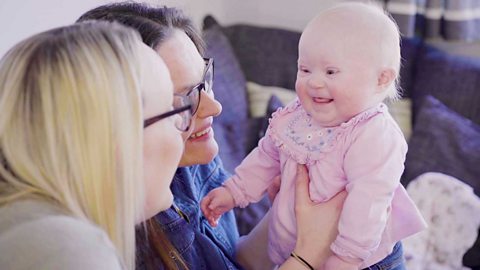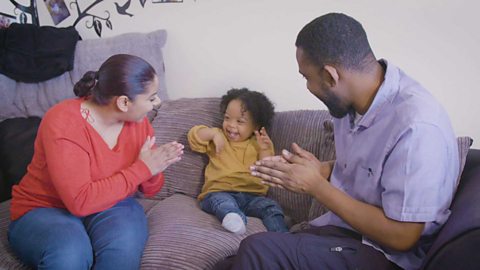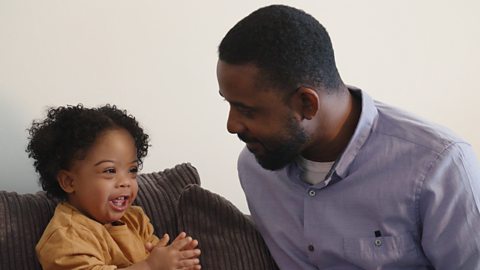Around one in 700 babies worldwide are born with a cleft lip or palate. However, many parents and carers have little idea of how clefts affect childrenโs ability to make speech sounds and learn languages as they grow older.
To get more information on the condition, how itโs treated and how parents and speech therapists help children with clefts, we spoke to Catrina Dyer, a specialist speech and language therapist who works at the Cleft Unit at The Royal Manchester Childrenโs Hospital.
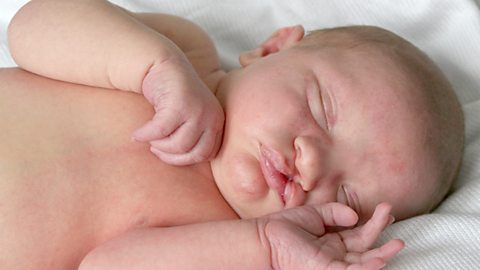
What is a cleft?
โA cleft is a gap in the upper lip and/or the roof of the mouth, otherwise known as the palateโ says Catrina. โChildren can be born with a cleft lip on its own, a cleft palate on its own, or with both. And they may have a cleft on just one side of the lip or there may be two clefts. Clefts are the most common facial abnormality babies are born with.โ
Clefts develop before birth. โThe gap is there because parts of the baby's face didn't join together properly during development in the womb,โ explains Catrina.
How are clefts diagnosed?
Diagnosis of clefts depends on whether they affect the lip, palate, or both. Cleft lips are usually diagnosed during the 20 week screening scan during pregnancy, although not all cleft lips are obvious on this scan. Cleft palates are hard to detect on an ultrasound scan.
โIf there's a cleft lip diagnosed, then the family will be assigned a specialist NHS cleft nurse very early on to explain their childโs condition, discuss treatment and answer any questionsโ says Catrina. โIf a cleft lip or palate does not show up on a scan, it is often diagnosed during the physical exam done after birthโ.
What causes clefts? How are clefts treated?
โNo one knows exactly what causes a cleft. It's a combination of genetic and environmental factors and it can't necessarily be predicted or prevented,โ says Catrina. It is very unlikely to have been caused by anything a parent did or did not do during pregnancy.
Itโs important that children with clefts are treated as they can affect childrenโs ability to feed effectively; leave them more vulnerable to ear infections and dental problems, and have difficulty with speech sounds as they begin to talk.
โIn the NHS we have multi-disciplinary teams that help children, young people and adults born with a cleft,โ says Catrina. โThere are regional centres across the UK and thereโs a very clear pathway with different professionals involved at different stages of the child's life. The really good bit is we're all in one place and the family can usually see everybody that they'll need to see within one clinic.โ
Treatment begins with parents seeing a specialist cleft nurse who offers help with how to feed babies born with a cleft.
Next, children will have surgery to repair the cleft and close the gap. Children will usually have surgery for a cleft lip between 3 and 6 months and for a cleft palate between 6 and 12 months.
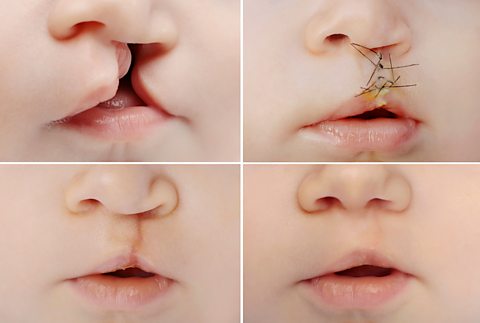
Alongside surgery, babies will also have their hearing monitored, as children with clefts are more likely to have hearing difficulties, particularly glue ear.
Speech and language therapists will also monitor childrenโs progress throughout their childhood and provide advice and treatment as needed.
Children born with a cleft can have a higher risk of tooth decay so they will also see a dentist as part of their cleft treatment who will give advice on good dental health. If the cleft involves their gum, children may also need orthodontic treatment which could involve wearing a brace.
Clinical psychologists also work to support families affected by cleft lips and palates. They are there are there to talk to and offer support to parents, children and adults as needed.
How do clefts affect speech development?
There is a huge variation in how a cleft palate can affect speech, language and communication. It is not always obvious what the impact will be until the child starts to speak.
The soft palate (the roof of the mouth towards the back), plays a big part in our ability to make sounds, Catrina explains. โWhen the soft palate is in a raised position, the passage to the nose is closed off and air is directed through the mouth and away from the nose.โ If the soft palate is not able to properly close off at the back of the mouth while speaking, it means air then escapes down the nose. This can result in children struggling to produce oral sounds such as โpโ and โbโ accurately and we may hear them using more nasal sounds such as โmโ, โnโ, or โngโ.
โAbout half of children born with a cleft palate will need speech therapy, at some pointโ says Catrina. In Manchester, we see children to give advice after their palate has been repaired between 6-12 months, then there is a further assessment at 18 months, 3 years, and 5 years, with the aim of children starting school with as good speech as possible,โ says Catrina.

How do you know if children need additional help?
โOnce children have had their palates repaired, we will be talking to parents about how to encourage those oral (mouth) sounds that we're looking for, and we will monitor children closely,โ says Catrina. โAfter palate surgery, in Manchester, some children will require a second operation when theyโre older to reduce the amount of air escaping down their nose when they speakโ.
โA child might have the structural capability to make the sounds, but they might also need speech therapy to help them learn how to make the different sounds. We will work with children and their families as long as they need help.โ
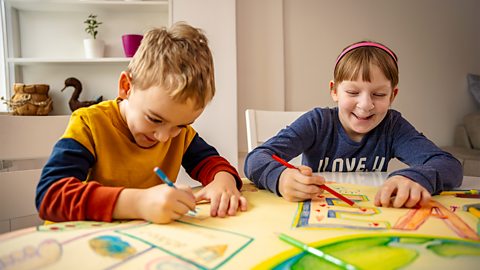
How can parents help children born with clefts?
Catrina has some top tips for parents whose children were born with clefts to help boost their speech and language learning.
Get face to face with children
โWe encourage parents to be face-to-face with their children as much as possible, so they've got ample opportunity to see their face and mouth to be able to watch how sounds are made.โ You can hold objects near your mouth, so as you name them, your child can see the object and how you move your tongue and lips to name it at the same time.
Limit background noise
โWhen you're playing with your child and modelling sounds, try to limit background noise and reduce any distractions. There is an increased risk of children who have a cleft lip and palate to have a hearing impairment so this can really help them to listen.โ
Use the senses
โSometimes we will say to parents to hold their childโs hand to their mouth. Then, as theyโre making the sound, their child can feel how the air is coming out of their mouth and not down their nose.โ
Demonstrate clearly
โSome children who have been born with a cleft palate have a preference to make sounds at the back of their mouth so it is helpful to try and show them the sounds at the front of mouth such as โpโ, โtโ, โsโ, โfโ, โthโ, โshโ. Play with sounds and show them your tongue as you say โt, t, tโ or โffffffffโ with your teeth on your lips and let them watch your lips open and close as make โp, p, pโ sounds.โ
Try to be patient
โDon't expect children to copy you straight away. Children need to hear each sound hundreds of times so even if they're just watching and listening to you at first, that's the crucial bit. Some children need to develop their joint attention before they're ready to start listening and then hopefully begin to copy you.โ
For more information on cleft lips and palates, visit the
The has lots more information and advice for parents and carers.

